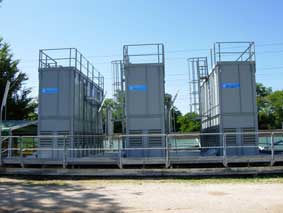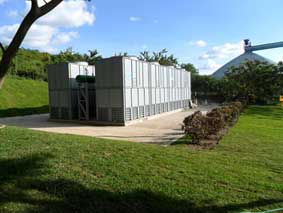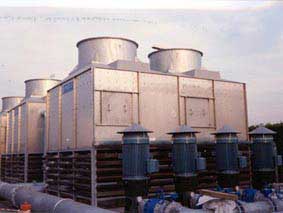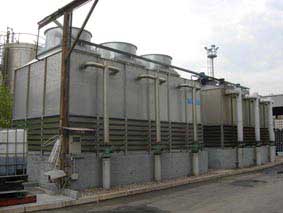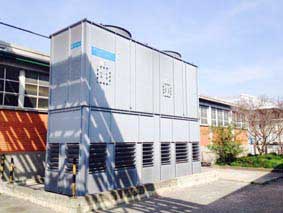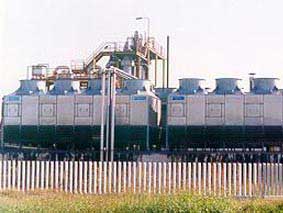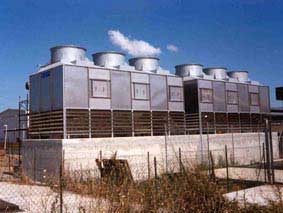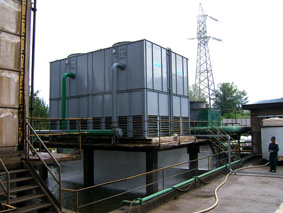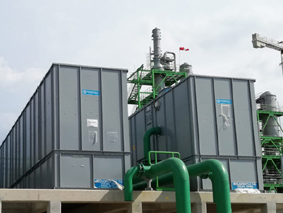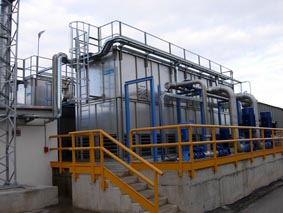Cooling tower for thermal power plant
Find out the types of evaporative towers used in thermal power plant
There are two types of evaporative towers, those induced and those forced, they are
distinguished by the use or less of fans to exploit the flow of air.
These types of towers are widely used because they have a good ratio of installed electricity
and heat energy disposed and therefore manage to eliminate large quantities of heat.
Their use has also increased further with the new laws regarding the discharge of hot water:
in fact, the cooling tower system allows the reuse of a large part of the water entering the
cooling process and therefore, compared to a system with water. to lose, reduces costs and
ecological problems, as the amount of hot water that must be discarded is minimal. There are
formulas (which we do not report but which are taken into account by the industries) that
calculate the consumption of water taking into account both the lost in the process of
evaporation, both that lost in the process of dragging and finally that of purging.
Let's now go on to describe how these towers are made up.
Plants that use fans usually use axial type (they have blades made of plastic or aluminum
alloy) connected to the electric motor.
The electric motors used on cooling towers are asynchronous three-phase with excellent
insulation class and continuous service.
In addition to the pipes, the water distribution network includes ABS spray nozzles that can
not be occluded and which distribute uniform distribution.
Finally, the exchange pack and drop separators are generally constructed of polypropylene;
the first are sheets with diagonal channels, the drops separators are sheets with folds and
droplets which in order to be able to easily remove them are usually divided into several pieces.
In conclusion, it can be said that nowadays, the use of cooling towers in steel and
metallurgical companies has become indispensable and always at the center of continuous
evolution, both in order to reduce the costs of production processes, and to order to avoid
problems related to the environment.
You could be interested in:


